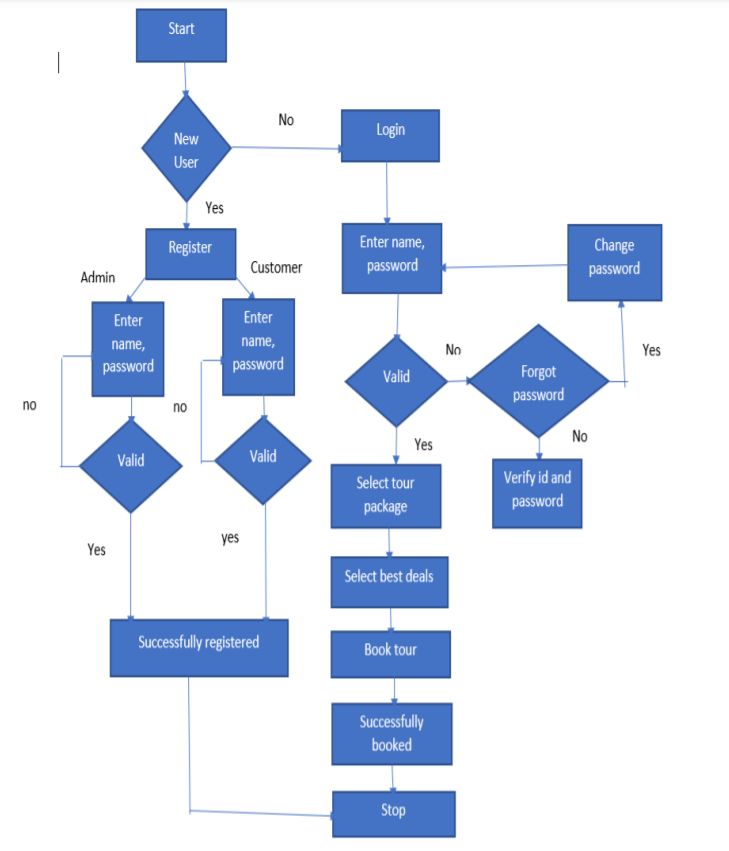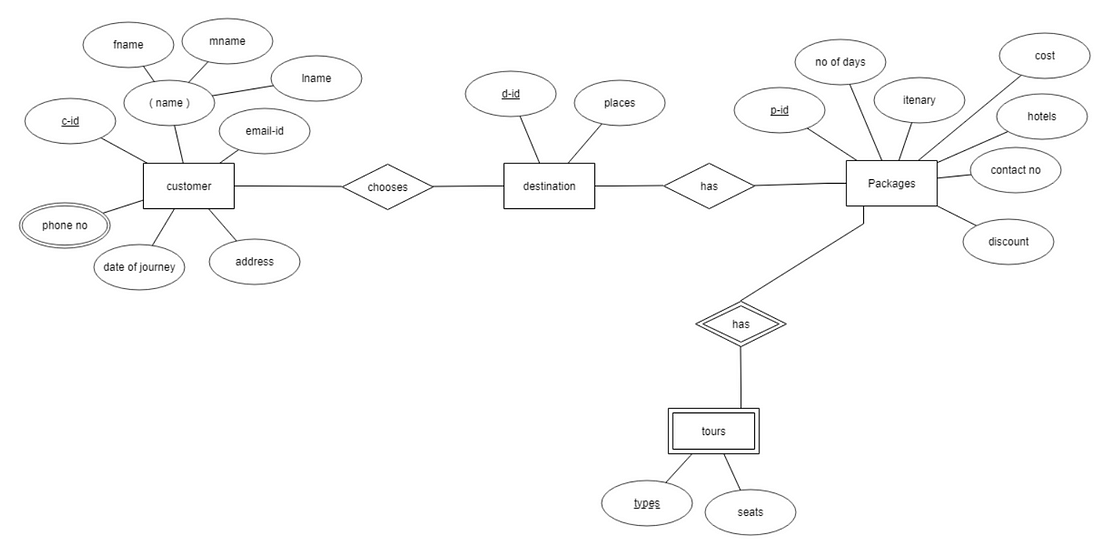This article was published as a part of the Data Science Blogathon
Introduction
Tourism Management System is an integrated software developed for tourism business. It is a dynamic and responsive system and it addresses the challenges of managing the records, missing records due to human errors, etc. The purpose is to build a system that performs all operations related to traveling, booking, sightseeing, etc. This system connects customers and agents directly, provides a feedback mechanism for tourists, maintains and controls the database of tourists’ information, and gives a variety of travel services. We have used Amazon Relational Database Service (Amazon RDS) provided by Amazon Web Services. Using Cloud computing services allows us to store important data to be stored on the cloud without any fear of our data getting stolen. Thus, it simplifies the process, thereby saving our time and effort. Moreover, it also facilitates easy updating and handling of records. If a user wants to change any of his personal information, they can easily do it and the action gets reflected on the cloud.
Challenges in the existing system
The user needs to visit the travel agency office to plan any tour. It involves a lot of manual paperwork, and customers need to stay in the queue for a long time. The present systems are inadequate in providing information and advice to the agencies and customers about tour plans. Most of the time agencies have to rely on local information sources and their own experience regarding time and cost. Through a phone call, they have to get information. There are some problems that exist in traditional systems, and those are given as follows:
● There will be many users visiting the portal, and hence we require a reliable and robust frontend that can withhold the users on our site.
● We need a secure database, whereas data will be store by everyone.
Thus, a Cloud-based Tourism Management System has the following advantages over the traditional system:
- Privacy and Confidentiality
- Effective during emergency conditions.
- It saves time and effort.
- Easy updation of records
Features of the proposed system
- Cloud Technology: Tourism Management System incorporates cloud-based back-end web design that can achieve in storing large storehouses of data.
- Security: The system is entirely password protected. Only authorized users can get access. Features like Mobile number verification via OTP, Email verification are also included.
- Flexibility: The project has been designed in such a way that new features and modules can be added to the system in the future as per user requirements.
- Time-Saving: One can access the travel management office from anywhere on the web and need not visit the travel agency office.
The various requirements of the system can be summarized as:-
Signup: New users give their completed personal details, address, email, and phone number for registration.
Login: The user enters their username and password for login.
Holiday packages: Users can then enter the date of journey and return; they can also select the packages, number of rooms, etc., and can choose the packages as Delux, Premium, Superdeluxe.
Best deals: Users can get the best deals with discount prices based on their preferences available during the festival season.
Feedback: The users can give their input.
About us: The user can get information about the travel agency
Contact us: It displays the contact details.
Technologies used
- Amazon RDS
- HTML
- CSS
- PHP
- Javascript
- MySQL database
System Implementation design
Workflow:

Fig. 1: Flowchart of the system
ER diagram:

Fig. 2: ER diagram
Relational model:

Fig. 3: Relational model
Steps to Create and Connect to MySQL Database
- Open the Amazon RDS Console and select the Region in which you want to create the instance
- Choose Create database option from the create database section
- Select your engine (MySQL, MariaDB, Oracle, etc)
- Configure your DB instance
- Download a SQL Client (MySQL Workbench)
- Connect to the MySQL Database
- You can now start creating tables as follows:
CREATE TABLE customer(cid int PRIMARY KEY, fname varchar(255),lname varchar(255),address varchar(255),email varchar(255), doj date, did int FOREIGN KEY REFERENCES did(destination));
CREATE TABLE package(pid int PRIMARY KEY, cost int, noofdays int, packagetype varchar(255), contact int, discount int, did int FOREIGN KEY REFERENCES did(destination));
CREATE TABLE tours(tid int PRIMARY KEY, seats int, types varchar(255), pid int FOREIGN KEY REFERENCES pid(package));
CREATE TABLE destination(did int PRIMARY KEY, places varchar(255));
CREATE TABLE phoneno(phoneno int, places varchar(255), cid int FOREIGN KEY REFERENCES cid(customer));
Note: To delete the RDS DB instance, Go back to AWS RDS Console. Select Databases and choose the instance, then select Delete from the dropdown menu.
Output design

Fig. 4: Home page
The output module of this system is a user-friendly window. The user enters their username and password for login. New users give their
completed personal details, address, email, and phone number for registration. Pages are designed to traverse through the home, sign in, my account,
feedback, holiday packages, best deals, about us, and contact us sections. If the entered data while sign-in satisfies all the conditions, then it is stored in the database else the user is warned by a message. If the username and password are valid, then the user can access all pages else the user is informed by a message showing an incorrect username/password. The user then gets complete information about the various tourist places. The user views the best deals after entering the required data about the tour and can book their tour. A page is designed for showing the best deals with discount prices according to user preferences. A separate page is intended for ‘About us,’ showing the information about the travel agency. A page for ‘contact us’ displays the contact details. Also, the users can give their feedback. This system also included the feature to delete, update, display the user details from the database.
Conclusion
Tourism is currently recognized as a global industry that is growing at a high rate, like any other industry. This web-based application helps in maintaining the database. It has a friendly environment that connects customers willingly. Thus, it simplifies the process by saving our time and efforts. It will help tour managers to control and handle the tour-related activities effectively and efficiently. A further modification could be possible where the system can be integrated with bigger organizations such as tourist agencies in order to help them.
References
[1] Shan Li; Xueli Duan; Yanxia Bai; Caixia Yun, “Development and Application of Intelligent Tour Guide System in Mobile Terminal” Seventh International Conference on Measuring Technology and Mechatronics Automation, pp.383-387, 2015, DOI:10.1109/ICMTMA.2015.98
[2] Zhou F, Zhao M, Sun Z, Zhao J & Gong Z. (2014), “The application of intelligence tourism mobile client based on ontology” Journal of Chemical and Pharmaceutical Research, Vol. 6(Isssue 5), pp 258-265.





